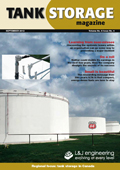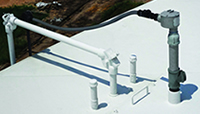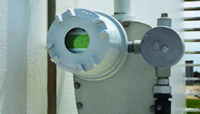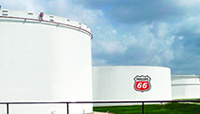The release of API 2350’s fourth edition serves as a reminder that preventing tank overfills and spills by using appropriate technology is something that cannot be ignored
Recurring small product spills during product delivery or sole large overfills can result in severe safety, environmental, monetary and violation consequences for a facility. A storage tank overfill can occur during product delivery or due to internal pressure build up. With the recent release of API 2350’s fourth edition, preventing tank overfills and spills by using appropriate spill prevention technology is becoming an important responsibility for tank farms to participate in.
Phillips 66, a global leader in the refining, marketing and transporting of crude oil and petroleum products, has a storage terminal located in Pasadena, TX. With twenty two aboveground storage tanks and four sump tanks, the Phillips 66 in Pasadena has their product (gasoline, kerosene and diesel) transferred through pipeline to be stored at their facility.
For Phillips 66, having reliable level gauging technology with overfill protection isn’t only vital, but essential for its day-to-day operations. As an innovator for level gauging, overfill alarms, inventory management systems and wireless instrumentation, L&J engineering prides itself on utilizing cutting edge technology to help facilities stay in compliance with industry regulations and recommendations. To ensure their facility conformed to overfill regulations, Phillips 66 took the initiative to be proactive and installed L&J engineering’s MCG 1090 High Level Alarm Probe and MCG 7000 Alarm Monitor independent overfill protection system.
Phillips 66 has an MCG 1090 High Level Alarm Probe installed at all of their aboveground storage tanks and on their sump tanks. The key components of the MCG 1090 features a displacer hung from a spring loaded shaft with a magnetic tip. As product is moved, the weight of the displacer moves causing the spring to raise the magnetic shaft. This would, in turn, trip an alarm switch that would relay a digital signal to the remote MCG 7000 Alarm Monitor System. What makes the MCG 1090 unique is its integrated solenoid coil, which provides complete self-testing capabilities. This self-testing feature can be triggered remotely providing the operator with a means of testing his high level probes without ever leaving the control room and without the risks of testing on top of the storage tank.
“The L&J engineering system not only serves as an accurate overfill alarm but also delivers the independent overfill protection that we were looking for,” Noel Cordova, Phillips 66 I&E Technician, said. “All of our tanks are outfitted with a MCG 2000MAX Transmitter and an MCG 1090 High Level Alarm Probe to make sure we have reliable level detection and overfill protection. The benefit of the MCG 1090 is its self-test feature. We have our alarm monitor set to test the probe and its communication every morning and we have all of that data communicate directly to our control room.”
To monitor the MCG 1090 Level Alarm Probes remotely, a MCG 7000 Alarm Monitor system is used. The MCG 7000 offers automatic self-checking of the alarm probes, printouts and discrete outputs for horns, emergency shut-off, as well as an optional host communications port. So in the event of product levels reaching a high set point, the operator will be immediately notified to take appropriate action from the control room. Featuring all requirements for an independent alarm system, the MCG 7000 includes an optional battery pack and charger to operate the system during power outages. Up to 100 separate alarm probes can be monitored by the MCG 7000 using a single, 4 wire data highway. The system uses an 80 character LCD to provide immediate alarm data, and a paper tape printer to automatically print alarms as they occur and for output of a daily event log.
Originally using standard float and tape gauges at all of their tanks to monitor level, Phillips 66 has installed the MCG 2000MAX Transmitter on to all of their mechanical float and tape gauges. Designed to mount directly onto a mechanical tank gauge, L&J engineering’s MCG 2000MAX Transmitter utilizes absolute magnetic encoding to accurately convert level measurement from the connected tank gauge into a digital reading. This allows a plant to integrate float and tape gauging technology into its inventory management system.
“We have benefited greatly from installing the MCG 2000MAX. The transmitter has a reduced number of parts and provides greater reliability,” Noel said. “L&J engineering has pushed transmitter and encoder technology forward to provide an unmatched accuracy and reliability in the transmitter market,” Jim Jannotta, L&J engineering Product Manager, explained.
Just as with the previous generations of MCG 2000’s, the MCG 2000MAX uses no batteries and operates as an absolute encoder, which does not require recalibration after a power failure. When power is restored, the MCG 2000MAX is unaffected and will accurately reflect the current level.
When accurate product levels make the difference between hazard and plant safety, dependable overfill prevention technology is vital at a facility. By combining reliable level gauging devices with an independent overfill protection system, Phillips 66 ensures that it maintains safe product levels with accurate data.
This article was featured in part in Tank Storage Magazine.

This article was featured in part in Tank Storage Magazine

MCG 1090 High Level Alarm Probe

MCG 2000MAX Transmitter mounted to a mechanical float and tape gauge

Phillips 66 storage terminal in Pasadena, Texas
5911 Butterfield Road, Hillside, IL 60162
by DQS Inc.